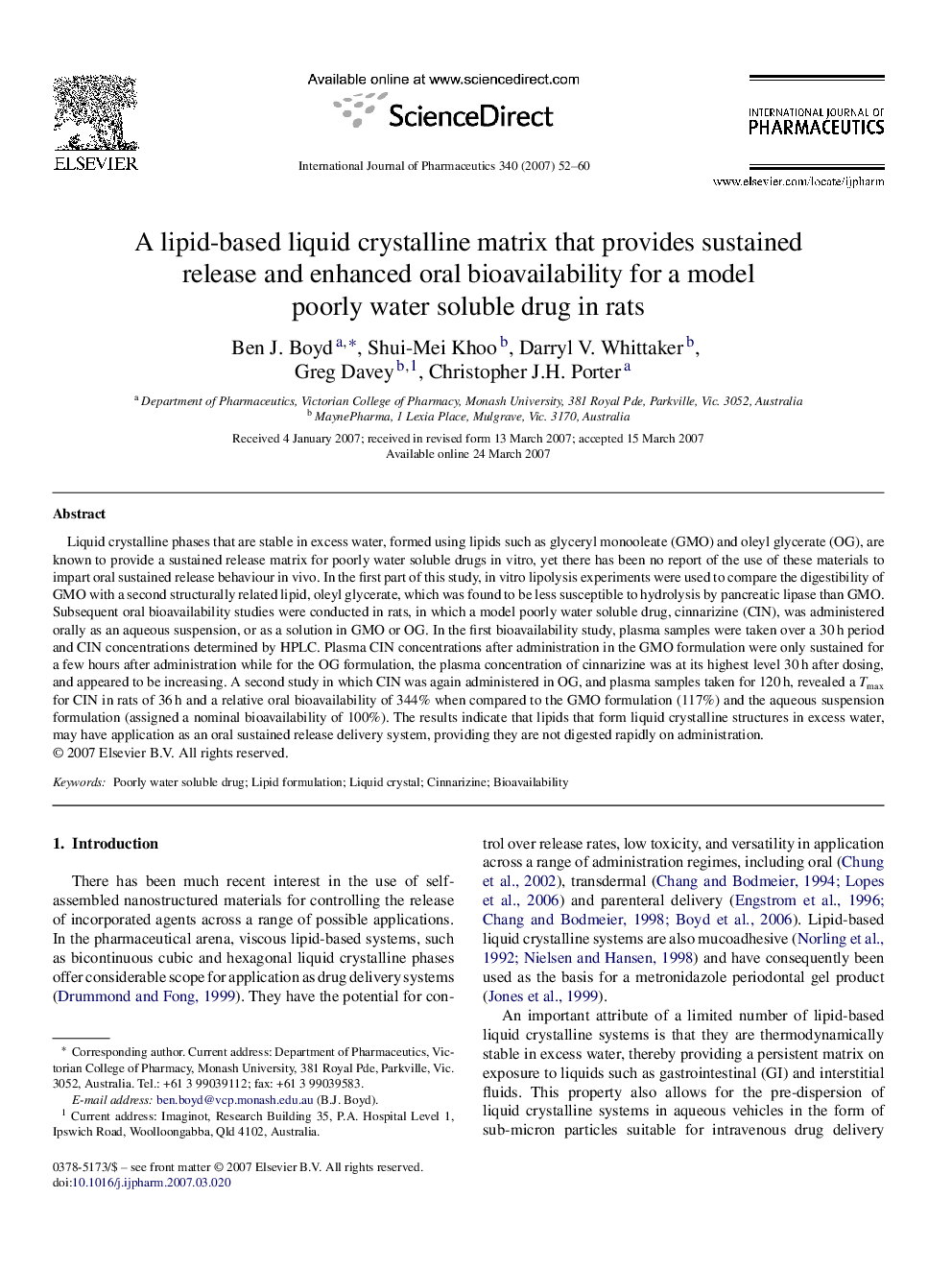| Article ID | Journal | Published Year | Pages | File Type |
|---|---|---|---|---|
| 2505878 | International Journal of Pharmaceutics | 2007 | 9 Pages |
Liquid crystalline phases that are stable in excess water, formed using lipids such as glyceryl monooleate (GMO) and oleyl glycerate (OG), are known to provide a sustained release matrix for poorly water soluble drugs in vitro, yet there has been no report of the use of these materials to impart oral sustained release behaviour in vivo. In the first part of this study, in vitro lipolysis experiments were used to compare the digestibility of GMO with a second structurally related lipid, oleyl glycerate, which was found to be less susceptible to hydrolysis by pancreatic lipase than GMO. Subsequent oral bioavailability studies were conducted in rats, in which a model poorly water soluble drug, cinnarizine (CIN), was administered orally as an aqueous suspension, or as a solution in GMO or OG. In the first bioavailability study, plasma samples were taken over a 30 h period and CIN concentrations determined by HPLC. Plasma CIN concentrations after administration in the GMO formulation were only sustained for a few hours after administration while for the OG formulation, the plasma concentration of cinnarizine was at its highest level 30 h after dosing, and appeared to be increasing. A second study in which CIN was again administered in OG, and plasma samples taken for 120 h, revealed a Tmax for CIN in rats of 36 h and a relative oral bioavailability of 344% when compared to the GMO formulation (117%) and the aqueous suspension formulation (assigned a nominal bioavailability of 100%). The results indicate that lipids that form liquid crystalline structures in excess water, may have application as an oral sustained release delivery system, providing they are not digested rapidly on administration.
